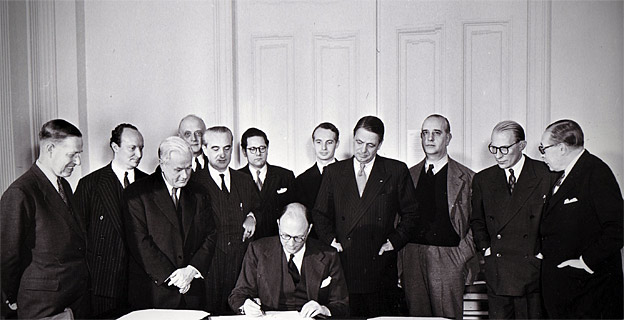The 1950s were one of the most fiercely contested periods of the Cold War. A new possibility, nuclear weapons technology, was increasing the capacity of destruction of wars more than ever before in history. Having survived two world wars with the concept of “Total War”, the world was now on the brink of a nuclear war.
Nuclear weapons were first used in 1945, first on Hiroshima and then on Nagasaki in Japan, the last of the Axis powers. The “Little Boy” and “Fat Man” missiles, with their devastation, drove Japan to surrender and demonstrated to the world the unique power of the United States. However, this uniqueness, and therefore the US monopoly, would not last long.
In 1949, about seven years after the Manhattan Project began in 1942, when the Soviet Union succeeded in producing its own atomic bomb, the United States’ unmatched superiority was no longer so unmatched. Indeed, this development would make the Cold War of the following years a “Cold War” in the true sense of the word. The 50s, when the US-USSR rivalry was at an all-time high, also witnessed many indirect struggles in different parts of the world.
The Soviet Union’s demand to add Kars and Ardahan to its borders while revising the peace treaty with Turkey was the most important factor determining Turkey’s place in this global struggle. After this period, the tension in Turkey’s relations with its neighboring Union of Soviet Socialist Republics would be quite high.
Although the series of crises in the Middle East began with the Arab-Israeli wars in this period, the Suez Crisis of 1956 was undoubtedly the one that would have the greatest impact on the Cold War.
Following the Revolution of the Free Officers in 1952, Gamal Abdel Nasser came to power, abolishing the sultanate ruled by the dynasty of Kavalalı Mehmet Ali Pasha and creating the Republic of Egypt. Abdel Nasser’s announcement that he nationalized the Suez Canal in 1956 caused an international outcry. Especially the European states, which had a high trade volume in the canal, naturally did not take this step well from their point of view. In the Middle East, which the USSR was trying to influence (remember the establishment of the Baghdad Pact), such an initiative was a significant danger for the Western Bloc, not only commercially but also in terms of prestige.
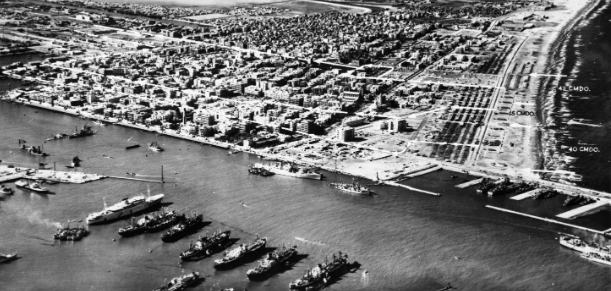
The result of this attempt was a joint Israeli-French-British military intervention in Egypt to control the Suez Canal. However, not every successful military action meant a favorable outcome at the table. The US publicly isolated its allies in this crisis, and in a rare move took a joint stand with the USSR and opposed the intervention. The US must have taken such a stance in view of the danger that Suez, which did not directly benefit it, could turn into a bigger war and that the Arab nation would gradually come under Soviet influence as a result of this intervention. In a way, France and Britain were the bad cops in the Western Bloc, while the US was the good cop. As a result, the Egyptian nationalization of Suez was recognized by the international community and Israel occupied the Sinai peninsula. This crisis will also call into question the credibility of the US in the eyes of its European allies.
After this development, while the US declared the Eisenhower Doctrine in order to restore the shaken prestige of the Western Bloc and increase its influence in the Middle East, the star of Abdel Nasser, who rose to the rank of a hero as a result of his brave step, would gradually shine in the Arab world and an Egyptian-Syrian-USSR rapprochement would emerge. It was precisely this rapprochement that would be the cause of the next crisis.
The rising Soviet influence in Syria was perceived as a national security issue in Turkey.
This point can be better understood by remembering that Turkey was neighboring the USSR on its eastern border and Bulgaria, one of the Iron Curtain countries, on its western border. As a matter of fact, the US was also uncomfortable with the Soviets becoming an effective power in the Middle East, but the US will not take a definite position in this case as it did in the previous crisis. On the other hand, Turkey and Iraq were increasing their military build-ups on the border and conducting military maneuvers in the region, intimidating each other one after the other. Turkey called its reserve officers back to duty, while in Iraq King Faisal suspended the parliament and declared martial law. The Soviets declared that the US was provoking Turkey and Iraq against Syria, while the US accused the USSR of turning Syria into a military stockpile.
Although the Syrian crisis did not result in a hot military confrontation, it was pregnant with important consequences. A year later, in 1958, Syria merged with Egypt to form the United Arab Republic under the leadership of Gamal Abdel Nasser, bringing the Soviet-Egyptian-Syrian rapprochement to its climax, and leading to the emergence of new orientations in Turkey and the United States in their search for security.
Until then, the United States had pursued a defense policy called the “Doctrine of Massive Retaliation”, based on a strong nuclear response if necessary.
When the Union of Soviet Socialist Republics put the world’s first artificial satellite, Sputnik, into orbit in October 1957, it also meant that the USSR could have an Intercontinental Ballistic Missile (ICBM). In other words, the USSR had the capability to launch a nuclear attack on Washington or New York with a missile fired from a launcher in Moscow. The United States did not have such a capability at that time. This situation would lead the US to adopt a new understanding in its defense policies. This new understanding, called the Flexible Response Doctrine, meant that the US was not as daring as before in the use of its nuclear power.
The US decided to build a “Defense” system of Medium Range Missiles to counter the Soviet intercontinental missile offensive, but in order to threaten the USSR, these systems had to be located in a close geography. This is how the process of placing Jupiter missiles in Turkey, which would be one of the causes of the Cuban Missile Crisis, began.
Turkey’s almost unquestioning support for NATO and the United States during the decade-long crises in the Middle East; its successful struggle against Soviet influence, unlike other states in the region; and, most importantly, its role as a cement between the Middle East and the USSR all added to its value. Turkey was an element of strategic superiority; if it were lost, the balance of power would be deeply shaken.
At this time, defense concerns in Turkey were on the rise, as they had been for a long time. Especially the recent crises, the brink of war with Syria, the 1958 Egypt-Syria merger and the Iraqi coup in the same year (Iraq was one of Turkey’s allies in the region) were among the factors that increased these concerns.
It was in such a situation that Turkey eagerly accepted the American offer to deploy Intermediate Range Ballistic Missiles (IRBM) to other NATO countries.
The other countries in NATO, except Britain, Italy and Turkey, did not accept this proposal. With such a move, Turkey would not only increase its own security, but also become even more strategically important for its allies. In this context, Turkey would become an “unsinkable aircraft carrier”.
Despite Turkey’s enthusiastic acceptance and the benefits for NATO, this was not easily digestible. Placing nuclear missiles so close to the USSR, already uncomfortably constrained by the “Containment Policy”, could have unintended consequences. The US wanted the missiles to be a deterrent, not a provocation. This ambivalence would have raised questions for the US even after the missiles were deployed.
In December 1957, Adnan Menderes announced that they had agreed to place IRBMs in Turkey and that Turkish officers were being sent to the United States for training. The USSR’s reaction to this development was, of course, harsh. In a letter to Adnan Menderes, Nikolay Bulganin warned that Turkey had made itself a target with these missiles: “A single match can start a big fire, but it will be the first to burn.” While the treaty for the placement of the Jupiters in Turkey was signed in Paris in October 1959, this treaty would not be submitted to the approval of the Turkish Grand National Assembly. With this treaty, the placement of the missiles would begin, Turkey would be the owner of the missiles while the US would be the owner of the nuclear warheads, and the firing of the missiles would only take place with the approval of both countries. The full operationalization of the missiles would be delayed until 1962.
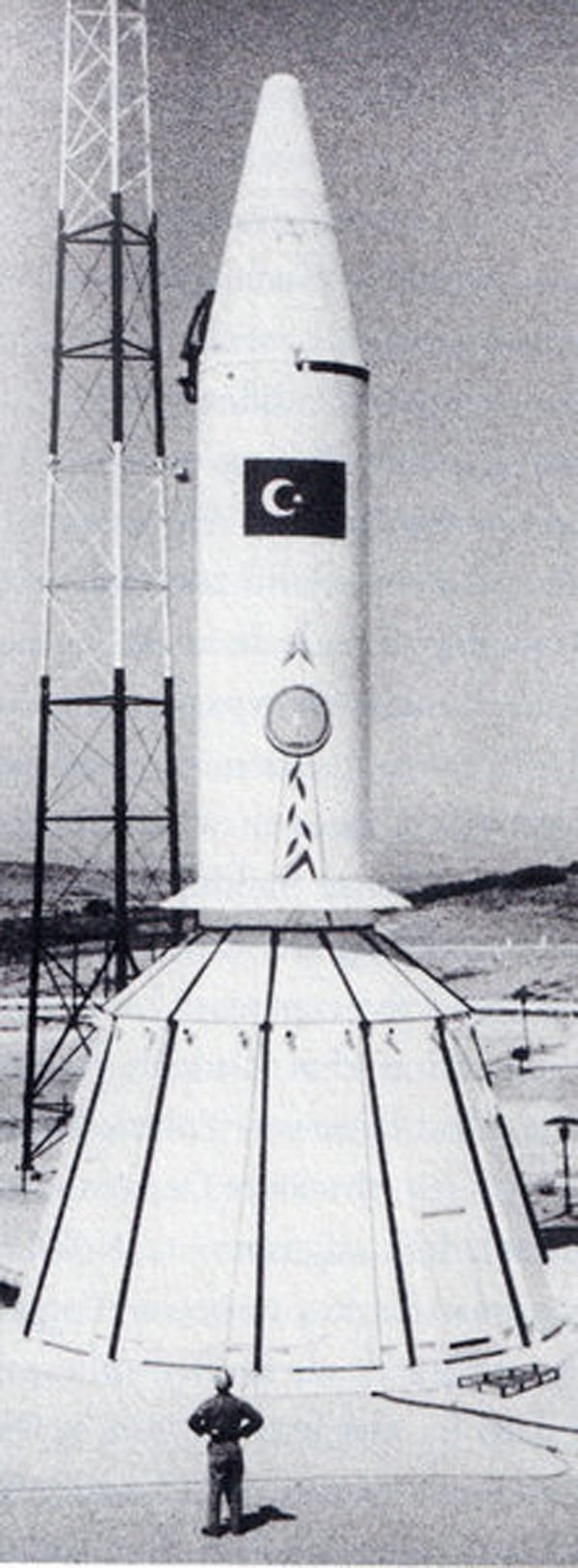
One of the tensions between Turkey and the United States and the Union of Soviet Socialist Republics was the U-2 aircraft crisis.
The US wanted to be prepared for possible threats in advance, and for this, information flow was necessary. U-2 spy planes were developed to provide this information flow. Flying at high altitudes, these planes could not be caught by radar and could take clear photographs with their powerful camera, providing a very important intelligence gain for that period. In order to ensure a wide flight range, the planes had to take off from the closest point to the Soviet borders, and this point was Turkey. Along with Turkey, Germany, England and Japan were also among the countries where the flights were made. These flights, which began in 1957, continued without any problems until May 1960, when a U-2 plane taking off from Incirlik was shot down by the Soviets over Pakistan. At first, the U.S. tried to conceal the truth of the matter, disguising the plane as a meteorological survey plane, but this attempt was not successful. The Soviets also captured the pilot, Francis Gary Powers, alive.
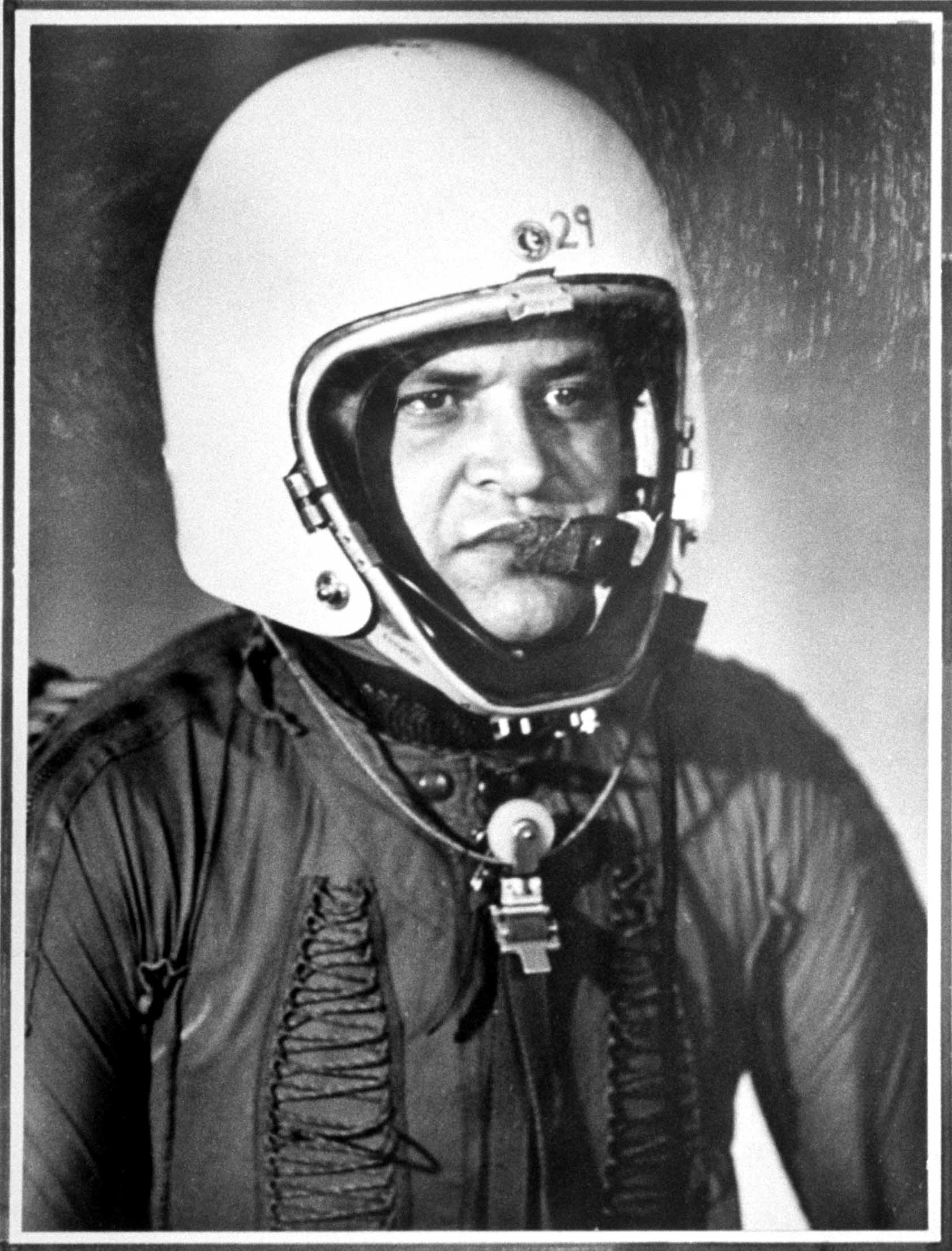
While the USSR reacted strongly to this situation, they were clearly referring to Turkey, saying that the bases from which the planes were launched were also targets in case of a possible attack. In fact, this development was likened in some circles to the Goeben and Breslau’s involvement of the Ottoman Empire in the First World War. The Turkish government refused to give a satisfactory explanation for the situation, stating that it could only be held responsible for the flight of its own aircraft outside its airspace. With the fall of this government in the same month, the U-2 aircraft crisis remained in the background in the Turkish public opinion. In the US, Eisenhower declared that such intelligence flights would cease, but the flights continued.
In this way, the tensions between the US-Turkey-Soviets, which were constantly escalating with missiles and airplanes, would reach their climax in 1962.
In 1959, there was a revolution in Cuba, dictator Batista was overthrown and replaced by Fidel Castro. The idea of socialism prevailing in Cuba, so close to the US, was a frightening thought for the US, which had a tradition of protecting Latin America from European influence since the Monroe Doctrine. Castro must have known this, for he initially drew a line between himself and the communists. Indeed, the communists did not provide Castro with unconditional support during the resistance. Castro did not embrace the Socialist People’s Party, nor did he try to suppress it, but rather tried to position himself in the center by liberalizing its activities.
Castro’s initial cautious, balanced attitude could not be sustained, and internal dynamics soon showed Castro that he who is neutral will be neutralized. On the one hand, the Castro government gradually became closer to the socialist front, while the United States continued to be prejudiced against it. From 1960 onwards, as a result of the relations that took shape, the US established the “Alliance for Progress” system in Latin America in order to prevent other countries from shifting to the communist front and started to provide financial aid for the development of other states.
President Kennedy, elected in 1960, was concerned about Cuba’s rapprochement with the Soviets.
Working to prevent this rapprochement, the CIA finally presented a plan to the president. According to this plan, Cubans who had fled Cuba and sought refuge in the United States would be trained to land in Cuba and overthrow Castro with the support of the local population. The Bay of Pigs landing in 1961 was a complete failure. Castro’s forces easily repulsed the landing force and there was no support from the local population. This operation brought Castro, perhaps still close to the center, closer to the USSR. Indeed, after this development, Cuba was declared a “Socialist State”.
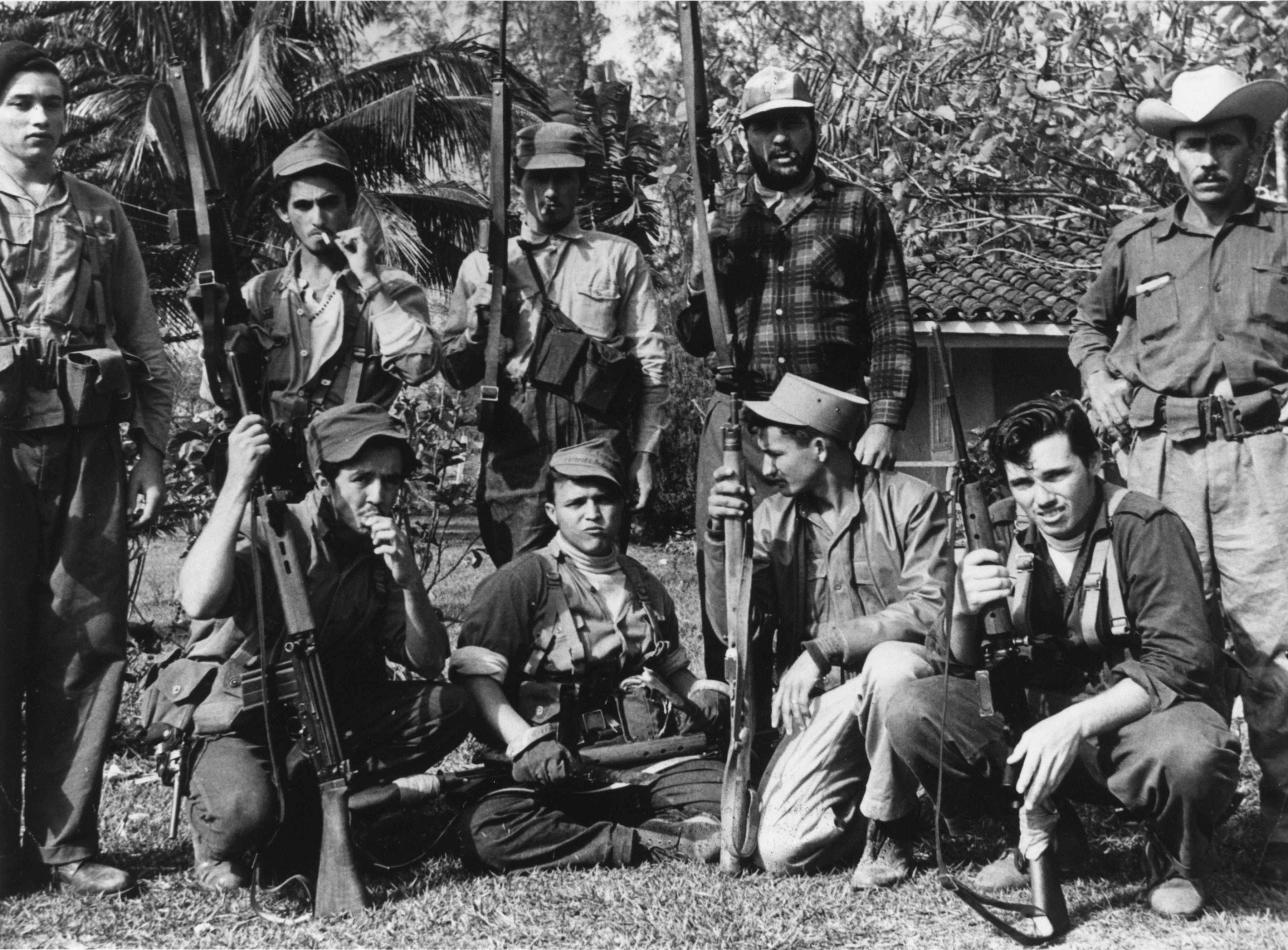
Although the officials of the Union of Soviet Socialist Republics claimed that they possessed intercontinental missiles and therefore did not need a military base outside their territory, the situation was somewhat different. Apparently, in order to alleviate the security threats posed to Cuba by the operation against Cuba and to completely tie Cuba to them, as well as to have a counterpart to the Jupiter missiles in Turkey, the Soviets started to deploy ballistic missiles in Cuba in 1962. When these missiles were detected by U-2 spy planes flying over Cuba that same year, a major worldwide crisis erupted.
On October 22, the first step towards the crisis was taken when the US navy blockaded Cuba to prevent Soviet shipping. These developments made Turkey one of the main actors in the crisis because of a development taking place miles away from it. In such a situation where peace was hanging by a thread, the Jupiter missiles in Turkey emerged as both one of the causes of the crisis and one of the means of solution. Turkey considered the Jupiter missiles very important for its own defense, but did not agree with the idea of their removal. The US, on the other hand, while conducting secret negotiations with the Soviets and promising to remove the Jupiter missiles in exchange for the missiles in Cuba, did not inform the Turkish government about this issue and managed to skillfully hide the existence of the negotiations from the whole world.
The crisis was resolved on October 27, 1962 with the agreements made as a result of secret negotiations.
The secret side of these negotiations remained unknown to the public for a long time. In fact, the general opinion was that the crisis was solved by Kennedy’s brave and cold-blooded attitude. Although the public was not very aware of this, the Turkish government was told by US officials that the Jupiter missiles should be removed and replaced with Polaris Submarines. In such an important crisis, the US had taken the decision without any communication with Turkey, ignoring the interests of its allies. Although it was later said that Polaris Submarines were more effective than Jupiter Missiles and the event was presented as a development in the public opinion, Turkey was not given a say in such an important issue in Turkey’s security.
These developments greatly undermined the credibility of the US in the eyes of Turkey. Especially after the Johnson Letter of 1964, Turkey repositioned itself in foreign policy. Moreover, it would have to redesign its place in the world without fixing itself to a single bloc. While diplomatic relations with the Soviets were being reshaped, Turkey’s policy in this new period began to prioritize its national interests over the interests of NATO, and thus the interests of the bloc to which it was affiliated.

